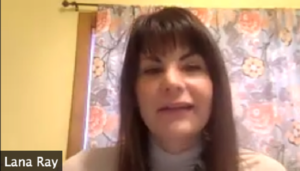Lana Ray advocates for the notion of reconciliation remain true to the original intent

By Rick Garrick
THUNDER BAY — Red Rock Indian Band’s Lana Ray highlighted how the term reconciliation has been appropriated by different groups during her Lakehead University Research and Reconciliation webinar on Jan. 19.
“When we’re talking about reconciliation, there’s some sort of disruption that needs to occur,” says Ray, Indigenous research chair in Decolonial Futures and assistant professor at Lakehead University. “Returning back to the original definition within the Truth and Reconciliation Commission, so within the context that it’s often talked about here on Turtle Island, it’s really about establishing and maintaining mutually respectful relationships between Anishinabe and non-Anishinabe. In order for this to happen though, there has to be a few things: awareness of the past, acknowledgement of the harm that has been inflicted, atonement, and action to change behaviour.”
Ray says she often sees people quote “mutually respectful relationships” when talking about reconciliation.
“But they kind of erase all of the other pieces and so talk about: ‘I’m engaging in a respectful way with Indigenous peoples, so that is reconciliation,’” Ray says. “But when you look at the definition, in and of itself, it is not. So there is disruption that needs to occur, we can’t have reconciliation amid ongoing processes of settler colonialism, we can’t have reconciliation when our land defenders are arrested and are harassed.”
Ray adds that Cindy Blackstock, executive director at First Nations Child and Family Caring Society of Canada, has talked about the harassment she has received.
“She’s talked about the over-surveillance, so those aren’t the conditions in which reconciliation can occur,” Ray says. “I encourage people to do some more, if you haven’t already, kind of reflection in thinking about reconciliation and how you may or may not use this terminology in relation to your work.”
Ray says there is a companion document to the Truth and Reconciliation Commission, What We Have Learned: Principles of Truth and Reconciliation, that talks about 10 principles that are foundational to thinking about reconciliation.
“It’s a good document to return to to ensure that notion of reconciliation remains true to the original intent of it and that it doesn’t become skewed or appropriated,” Ray says.
Ray, who recently acquired $1.2 million in Canadian Institutes of Health Research (CIHR) funding in partnership with traditional knowledge holders and Waasegiizhig Nanaandawe’iyewigamig Health Access Centre to explore the efficacy of using traditional healing to prevent cancer, also spoke about the responsibility Indigenous researchers have while doing research.
“As an Anishinabe person, often your attachment to a research project lends some legitimacy in terms of the ‘authenticity’ of the project,” Ray says. “So in many ways, although we can be marginalized within Academe, we are also somewhat in a position of gatekeepers in that respect. We also have a lot of responsibility in terms of the work we do and who we are partnering with and who we are lifting up in terms of these processes of Indigenous research.”
Ray also highlighted a photo of Lakehead University’s medicine garden, noting that it reminded her of a quote by Maoris scholar Linda Tuhiwai Smith, who wrote Decolonizing Methodologies: Research and Indigenous Peoples.
“When thinking about Indigenization and thinking about reconciliation and what these processes looked like through a lens that can actually be transformative, she talked about the difference of having a landscape at your university that is an English garden and having a medicine garden versus having your university landscape be a medicine garden and then having an English garden as perhaps one small feature,” Ray says. “So I think it’s absolutely wonderful that we have this medicine garden at Lakehead, but then in thinking about processes of [being non-Indigenous] and Academe, what would that look like if what is in our medicine garden, all these plants that are from this area, if that’s what our whole campus looked like?”


